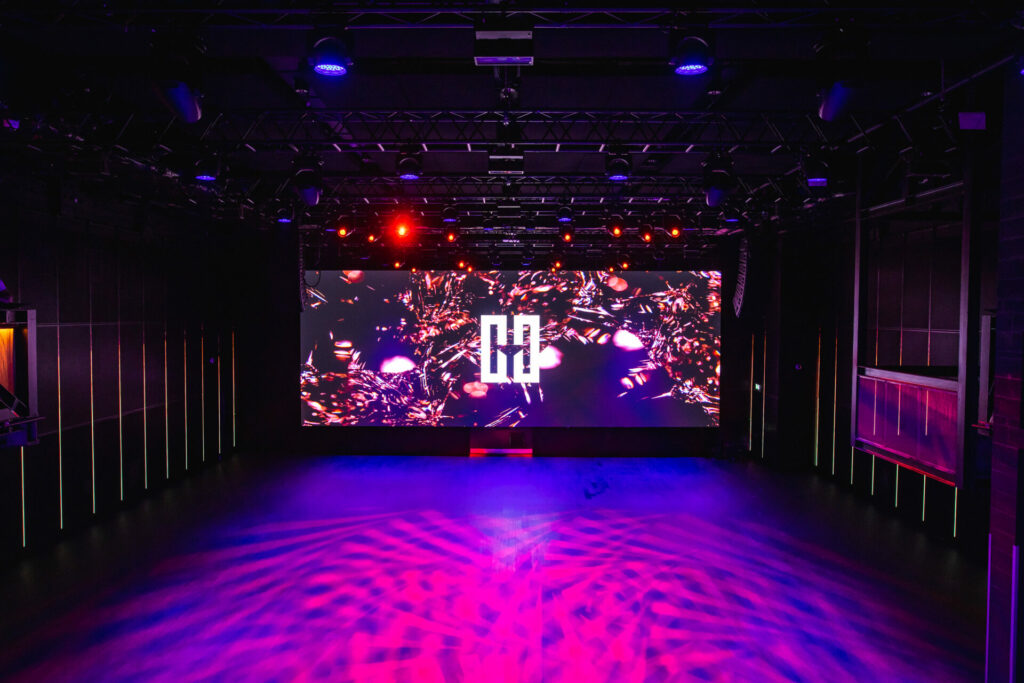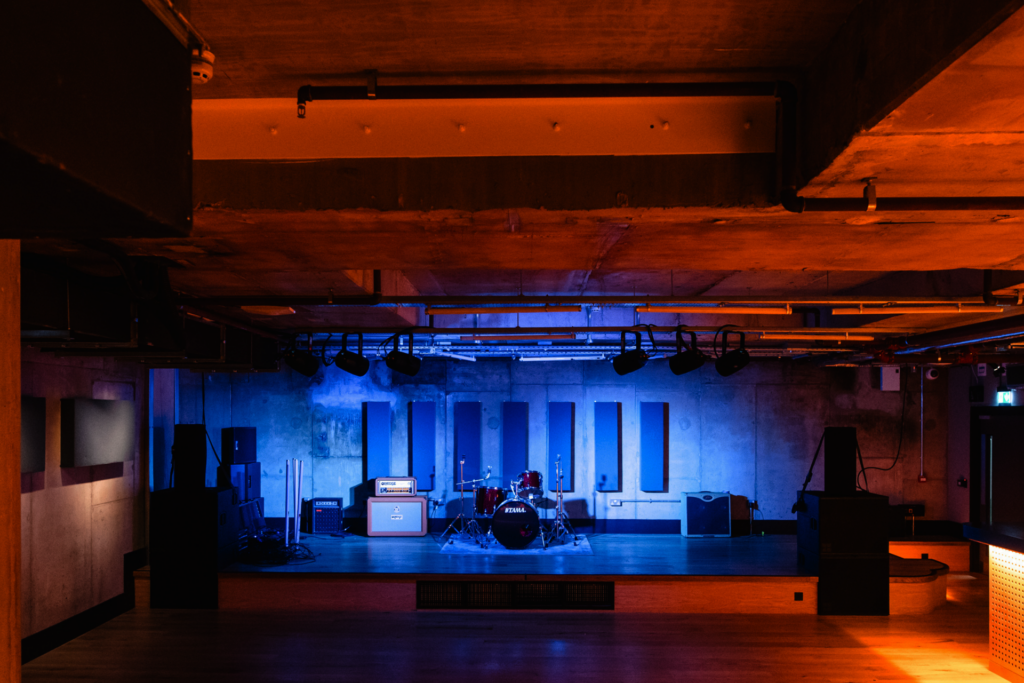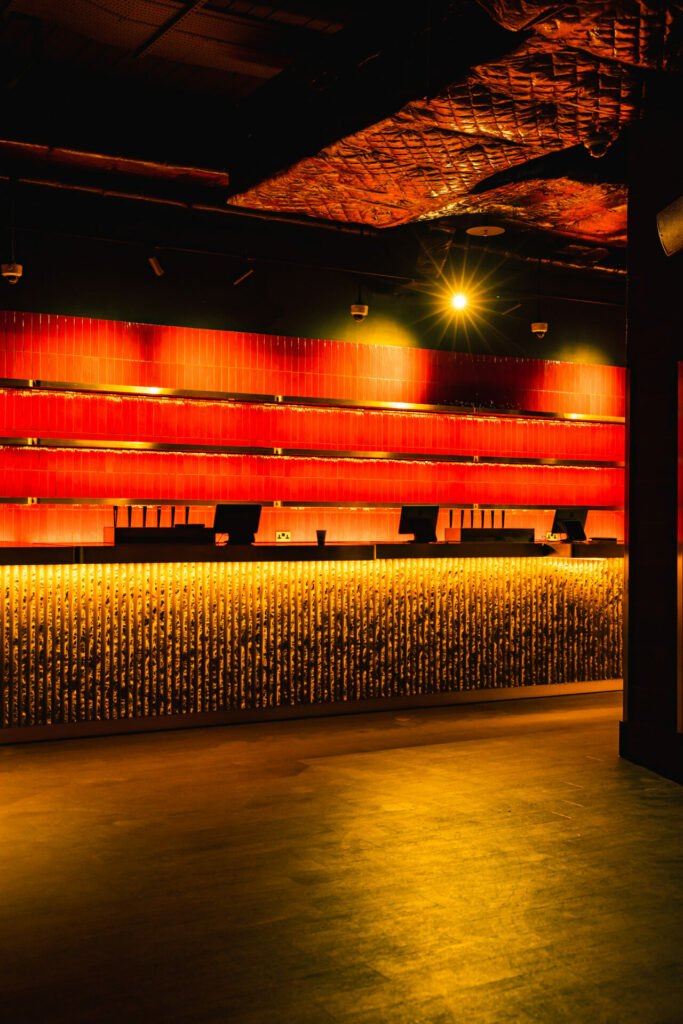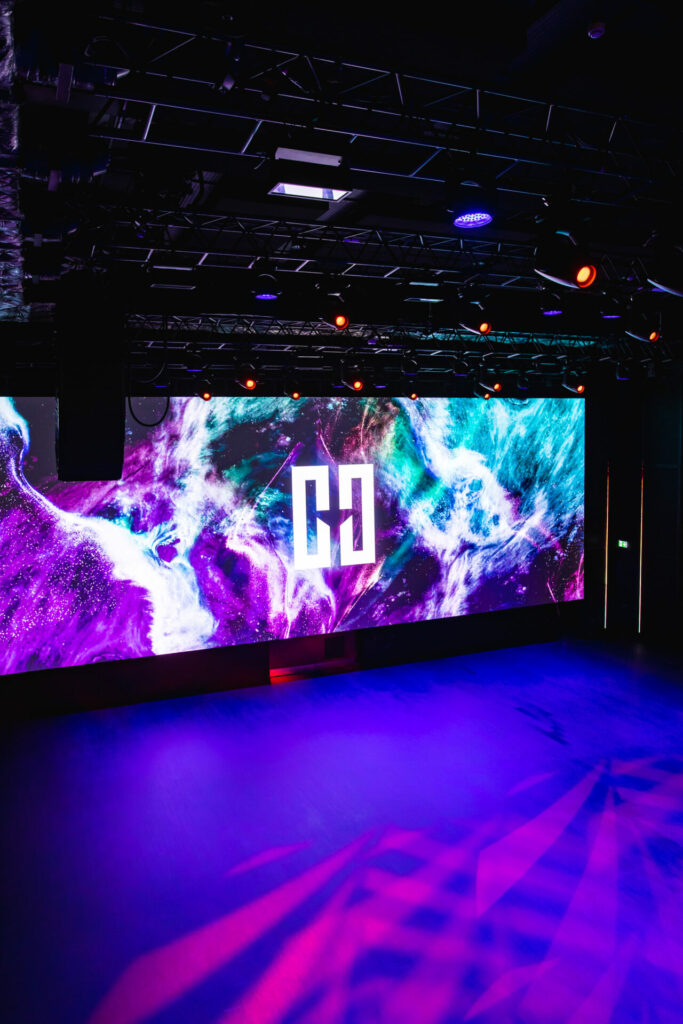Inside Outernet, the development bringing live music back to Central London
Rolling Stone UK heads inside HERE and The Lower Third in the Outernet District to discover Central London's most anticipated new venue
By Nick Reilly

As the Outernet District opens to gig-goers for the first time, the venue’s operators have told Rolling Stone UK how it’s set to bring live music back to the heart of central London.
The development, which first opened last month on Charing Cross Road, marks the largest purpose-built venue to central London to open since the 1940s. From the outside, it is impossible to miss the huge gold frontage that looms large outside Tottenham Court Road Station, as well as the imposing LED screens (in fact the biggest in the world).
But once inside, the heart of the venue comes in the form of HERE, a 2000 capacity gig space over two floors which boasts state-of-the-art audio technology and LED screens that will come to life when the likes of Gang of Youths, Eurovision hero Sam Ryder, Alfie Templeman and Berwyn take to the stage in the coming months.
The technological advancements of HERE mean it is firmly facing the future, but it is situated in an area only too aware of its musical past. Outernet backs onto the historic Denmark Street, which was the epicentre of London’s music scene in the 70s – with guitar shops, recording studios and bars frequented by the likes of David Bowie, the Sex Pistols and the Rolling Stones.

That heritage is reflected in The Lower Third (a nod to one of David Bowie’s first ever bands), which was previously known as the 12bar – a dive bar that hosted early shows from The Libertines. It has now been redeveloped and brought into Outernet.
“The Lower Third, we were very conscious of that space and what it meant to music fans and the music industry,” says the venue’s operating partner Karrie Goldberg.
“It was also only one floor before, so we’ve added a second room upstairs to really bring live music back to Denmark Street. No one wanted to turn it into Disneyland. We wanted to acknowledge the importance of what the 12 Bar was, but nudge it forward a little bit in terms of what the programming could offer.”
Goldberg’s co partner Robert Butters adds: “For The Lower Third we want bands with a following today, but also those who can say in the future they started here. We want it to be a place where bands make their name, much like the Astoria and 12 Bar were.”

Still, HERE appears to be a venue that very much benefits from its future-facing approach. A mezzanine on all three sides means fans are left with no shortage of vantage viewing points, while a team of architects have specifically designed the walls to absorb sound. When paired with the high-end sound system, it is almost like the designers have specifically ticked off every minor quality quibble that gig-goers could possibly have .
As for the programming ahead, Goldberg says programming manager Chloe Mitchell has a “broad understanding” of the shows in the months ahead.
“We’ve got a huge variety of shows coming up. We’ve got people who know their lanes very well and they are strategically booking the calendar to add to that.”
It is a huge draw to artists too. A tour of the venue reveals one of the most envious backstage areas that Rolling Stone UK has ever seen – with two luxe lounges equipped with all the facilities that a performer could possibly desire.
For all the venue’s innovations and charms, however, there still remains scepticism in some circles about its accessibility and affordability. It is a world away from the sweat and sawdust vibes of past Charing Cross Road venue The Astoria – which closed in 2009 to make way for Crossrail.

Allaying those concerns, Goldberg adds: “We’re very conscious of promoters putting an accessible price on their ticket. The case in point is Sam Ryder, it was £15 and it sold out immediately. The artists and promoters still have to make money, but so far we haven’t had pushback.”
Butters, meanwhile, confirms that a pint will cost £6.50. While that won’t be for everyone, it is largely in line with the average price to be found in the area.
Ultimately though, it’s hard not to feel like Outernet is bringing music back to Central London at a time when nearly all venues in the immediate area have been forced to shut their doors. It is hoped that the music shops of Denmark Street will benefit from the trade of visiting musicians, while emerging musicians have just been given another possible location at which they can make their name. For fans and industry alike, you sense its opening can only be a good thing.
